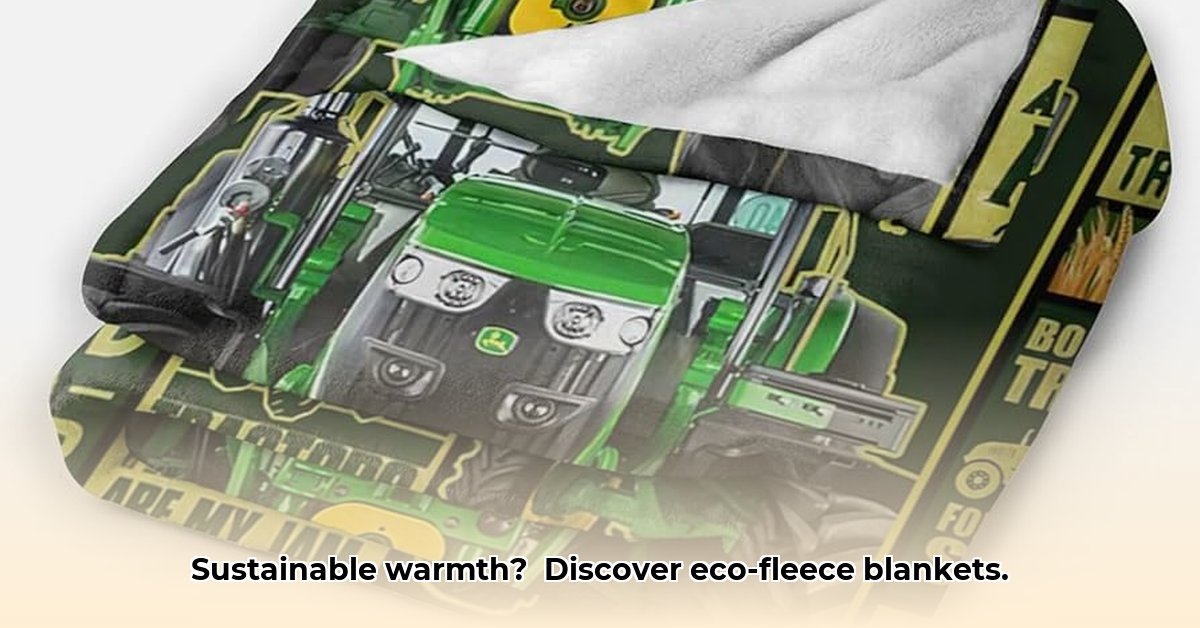
The Growing Market for Sustainable Children's Blankets
The market for children's fleece tractor blankets is experiencing significant growth, driven by online searches and sales on platforms like Etsy and Amazon. While precise sales figures remain elusive, the sheer volume of listings indicates substantial consumer demand. This burgeoning market presents a critical opportunity: to ensure these beloved items are produced sustainably, balancing adorable design with responsible manufacturing. But are these cuddly comforts truly kind to our planet? This article delves into the challenges and opportunities within the eco-friendly fleece tractor blanket sector.
Sustainability in Fleece Tractor Blanket Production
While some manufacturers are leading the way, proudly displaying certifications like OEKO-TEX STANDARD 100 (a certification guaranteeing the absence of harmful substances in textiles), a significant number lack transparency in their supply chains and manufacturing processes. This creates a critical challenge for consumers wanting to make sustainable choices.
Challenges to Sustainable Production
The path to truly sustainable fleece tractor blankets is fraught with obstacles. Sourcing eco-friendly materials, such as recycled polyester or organically grown cotton, is often more expensive than conventional options. This added cost can impact pricing and limit production for smaller, ethical brands. Moreover, the lack of transparency around manufacturing processes makes it difficult to verify claims of sustainability. Finally, effective end-of-life management, including recycling or responsible disposal, is often overlooked.
Opportunities for Sustainable Brands
Conversely, the increasing consumer awareness of environmental and social issues presents a substantial opportunity. Many parents are willing to pay a premium for products made with sustainable materials and ethical labor practices. This translates to a loyal customer base, brand differentiation, and potentially higher profit margins for companies prioritizing sustainability.
Actionable Steps for a Greener Future
To foster greater sustainability, proactive steps are needed across the entire value chain:
1. Manufacturers:
- Short-Term: Obtain OEKO-TEX or similar certifications. Publicly disclose material sourcing and manufacturing details. Explore sustainable materials like recycled polyester or organic cotton. Implement water-efficient manufacturing processes.
- Long-Term: Develop closed-loop recycling systems for old blankets. Invest in research for bio-based materials. Conduct Life Cycle Assessments (LCAs) to pinpoint and reduce environmental impacts across the entire product lifecycle.
2. Consumers:
- Short-Term: Choose brands with transparent sustainability practices. Invest in durable, long-lasting blankets. Support businesses committed to ethical production and look for certifications like OEKO-TEX Standard 100.
- Long-Term: Advocate for stricter standards in textile production. Support companies with proven environmental responsibility. Donate or repurpose used blankets to extend their lifespan.
3. Retailers (e.g., Amazon, Etsy):
- Short-Term: Implement stricter guidelines for evaluating brands' sustainability claims. Promote sustainable options prominently. Educate consumers about eco-friendly choices.
- Long-Term: Develop robust methods to verify manufacturers’ sustainability claims. Offer incentives to brands practicing sustainability. Provide clear and accessible information to help consumers make informed decisions.
4. NGOs and Certification Bodies:
- Short-Term: Advocate for more rigorous certification standards. Foster collaboration within the industry to promote best practices. Encourage stricter regulations for textile production.
- Long-Term: Develop comprehensive certification systems encompassing the entire product lifecycle. Promote industry-wide collaboration to achieve widespread adoption of sustainable practices.
Future Trends and Risk Mitigation
Future trends indicate a growing demand for sustainable textiles. Advancements in material science are producing innovative recycled fibers and bio-based alternatives. However, challenges remain. Managing risks like "greenwashing," supply chain disruptions, and consumer skepticism is critical for long-term success. Proactive risk mitigation strategies, including third-party audits and transparent supply chain documentation, are essential.
A proactive approach to risk management is vital:
| Risk Factor | Likelihood | Impact | Mitigation Strategy |
|---|---|---|---|
| Greenwashing | High | High | Independent third-party audits; transparent and detailed supply chain documentation |
| Supply Chain Disruptions | Medium | Medium | Diversified sourcing; strong relationships with reliable suppliers |
| Consumer Skepticism | Medium | Medium | Clear and honest communication; demonstrated commitment to sustainability |
| Fluctuating Material Costs | Medium | Medium | Exploration of alternative, cost-effective, and sustainable materials; efficient resource management |
Conclusion: A Collective Commitment to Sustainability
The future of the fleece tractor blanket market depends on a collective commitment to sustainability. By embracing eco-friendly practices, we can ensure that future generations can enjoy these cozy blankets without compromising the health of our planet. The adorable factor shouldn't come at the cost of environmental responsibility. Let's work together to make this a reality.